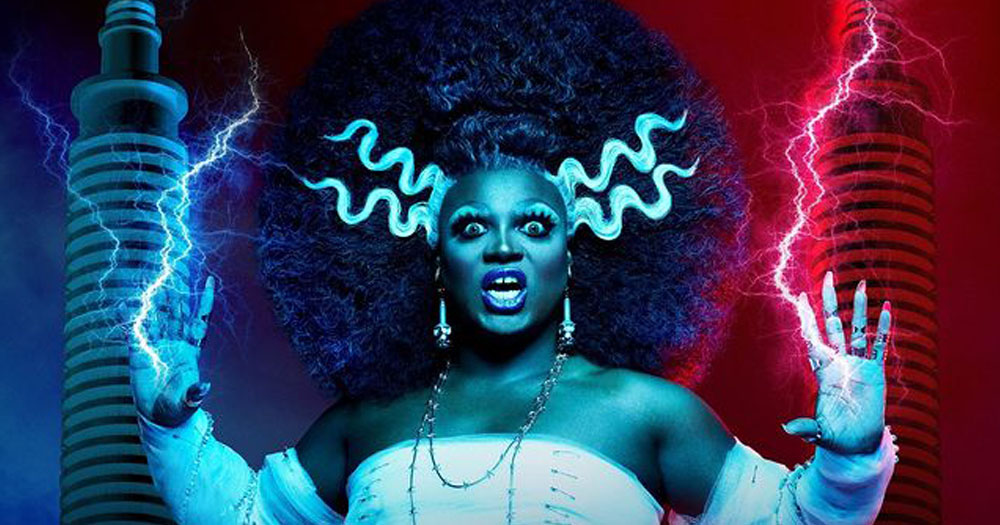I was thinking of coming up with a list of the best queer horror movies when I came upon a brand new docuseries called Queer For Fear: The History Of Queer Horror. The series explores, amongst other things, the influence of the LGBTQ+ community on the genre going back to the very beginning.
The series includes contributions from queer writers, directors, historians and more. The first episode begins with Mary Shelley, considered the mother of both science fiction and horror, and explores her non-confirming personal life and the creation of Frankenstein (1818) and the queer themes that may be found within its pages.
Also explored in the first episode was Oscar Wilde’s A Picture of Dorian Gray (1891). Seen as a metaphor for hiding something inside yourself, and to one contributor, as a premonition of what would befall Wilde himself (Wilde had written in a letter that Dorian was who he would like to be).
The first episode closes out with a discussion of Dracula (1897). Bram Stoker’s own sexuality is covered, as well as the influence that the Wilde scandal had upon him. It is with this that the focus moves on to movies, with discussions on various Dracula adaptations starting with Nosferatu (1922), directed by F.W. Murnau (who was himself gay).
The second episode explores the work of two legendary directors. The first was gay director James Whale who made four horror classics: Frankenstein (1931), The Old Dark House (1932), The Invisible Man (1933) and Bride of Frankenstein (1935).
SPONSORED CONTENT
These movies can all be seen through a queer lens. Whale utilised a bunch of queer actors in them, including Ernest Thesiger who appeared in both The Old Dark House and Bride, but is probably remembered more for the latter where he plays Doctor Septimus Pretorius. Both of his performances are wonderfully camp.
The other director discussed was Alfred Hitchcock. The episode includes an exploration of his use of queer-coded characters, often in villainous roles including Brandon Shaw and Philip Morgan (Rope, 1948) and Norman Bates (Psycho, 1960). The Norman Bates discussion is interesting as it includes a contribution from Anthony Perkin’s son, Oz, who is an actor, screenwriter, and director. The episode also covers some of the queer creatives that Hitchcock worked with.
The third episode is a discussion on transformative horror, examples being Jekyll & Hyde and werewolves, and how these can be seen as a metaphor for or an allusion to queer stories.
The film Cat People (1942) is covered in a bit of detail. It was written by queer creator DeWitt Bodeen and can be seen as a story about a lesbian woman struggling to come to terms with her sexuality. The movie has been selected for preservation by the US Library of Congress and earned praise as a landmark movie by legendary critic Roger Ebert.
The episode moves on to explore movies that show an adult scientist experimenting on a young person, and how gay filks were often seen in the past as the ones destroying young people, and how these two ideas are connected.
The example used to demonstrate this was I Was A Teenage Werewolf (1957) starring Michael Landon. I mention Landon as his son Christopher, a screenwriter, producer and director, contributes and discusses how the film made him feel as a gay man when his father showed it to him.
View this post on Instagram
The discussion moves on to aliens and how the body-snatcher-style movies and the fear of aliens can be seen as the equivalent fear of gay people – I’ll be checking out I Married A Monster From Outer Space (1958), based on what I saw in the show.
The docuseries covers more than I’ve gone into here but I wanted to give people an idea of what it was about. I usually dislike a lot of the ‘talking heads’ chosen for this kind of show, but the contributors in Queer For Fear all had relevant backgrounds and had some interesting things to say, especially the ones I noted in this piece.
I learned a few things and I have been inspired to delve deeper into the subject. In particular, I want to read contributor Harry Benshoff’s Monster’s In The Closet (1997). There is one episode to go, so check it out – You’ll at least get some good horror movie recommendations.
‘Queer For Fear: The History Of Queer Horror’ is available to stream now on Shudder. Make sure to follow David on Twitter for more pop culture news
© 2022 GCN (Gay Community News). All rights reserved.
Support GCN
GCN is a free, vital resource for Ireland’s LGBTQ+ community since 1988.
GCN is a trading name of National LGBT Federation CLG, a registered charity - Charity Number: 20034580.
GCN relies on the generous support of the community and allies to sustain the crucial work that we do. Producing GCN is costly, and, in an industry which has been hugely impacted by rising costs, we need your support to help sustain and grow this vital resource.
Supporting GCN for as little as €1.99 per month will help us continue our work as Ireland’s free, independent LGBTQ+ media.
